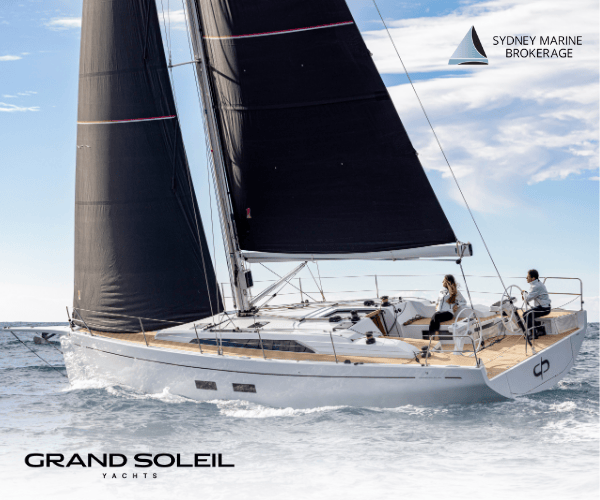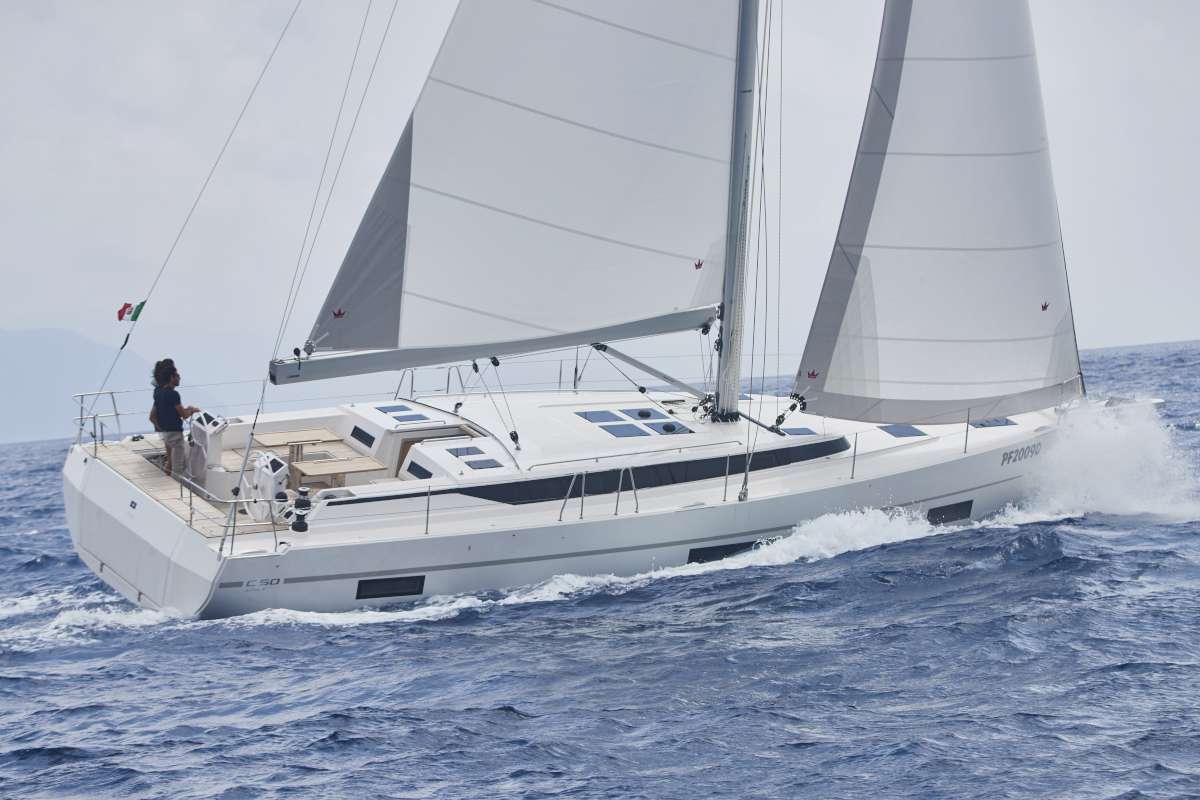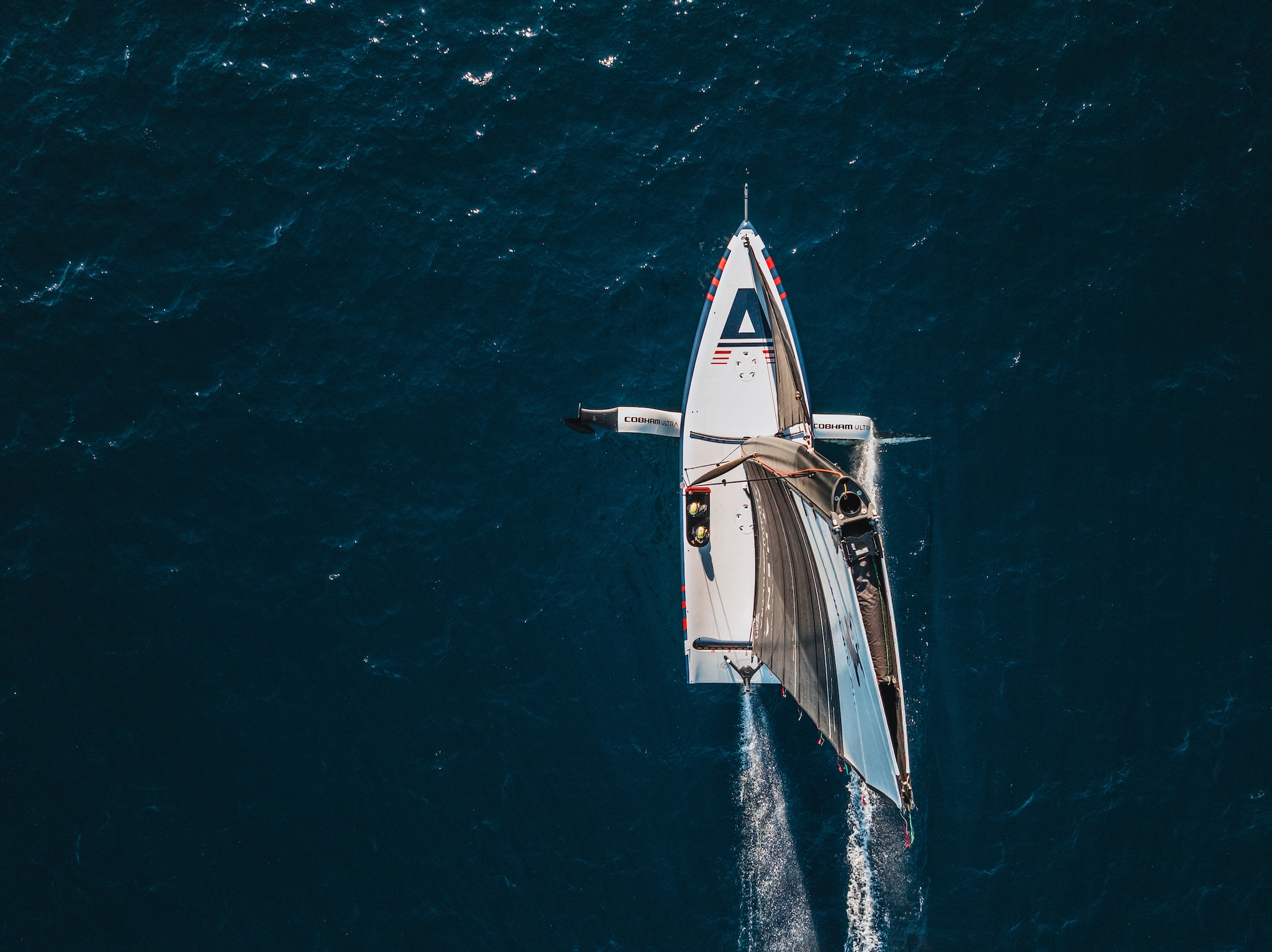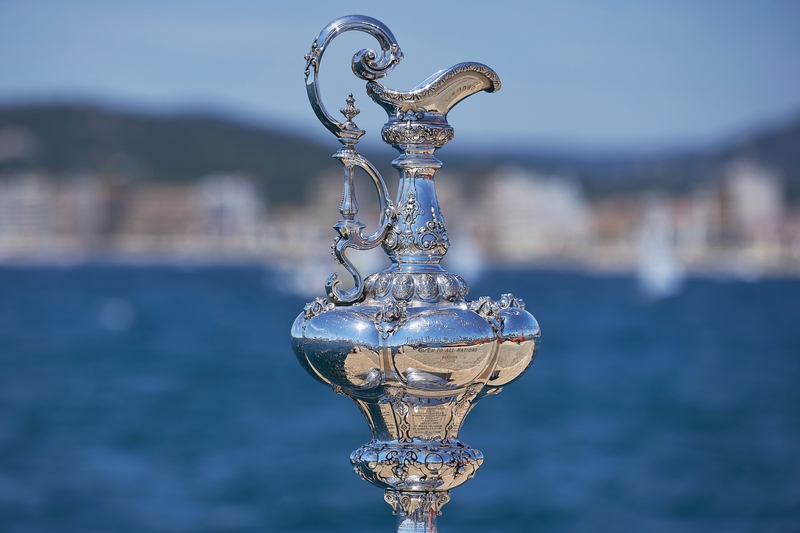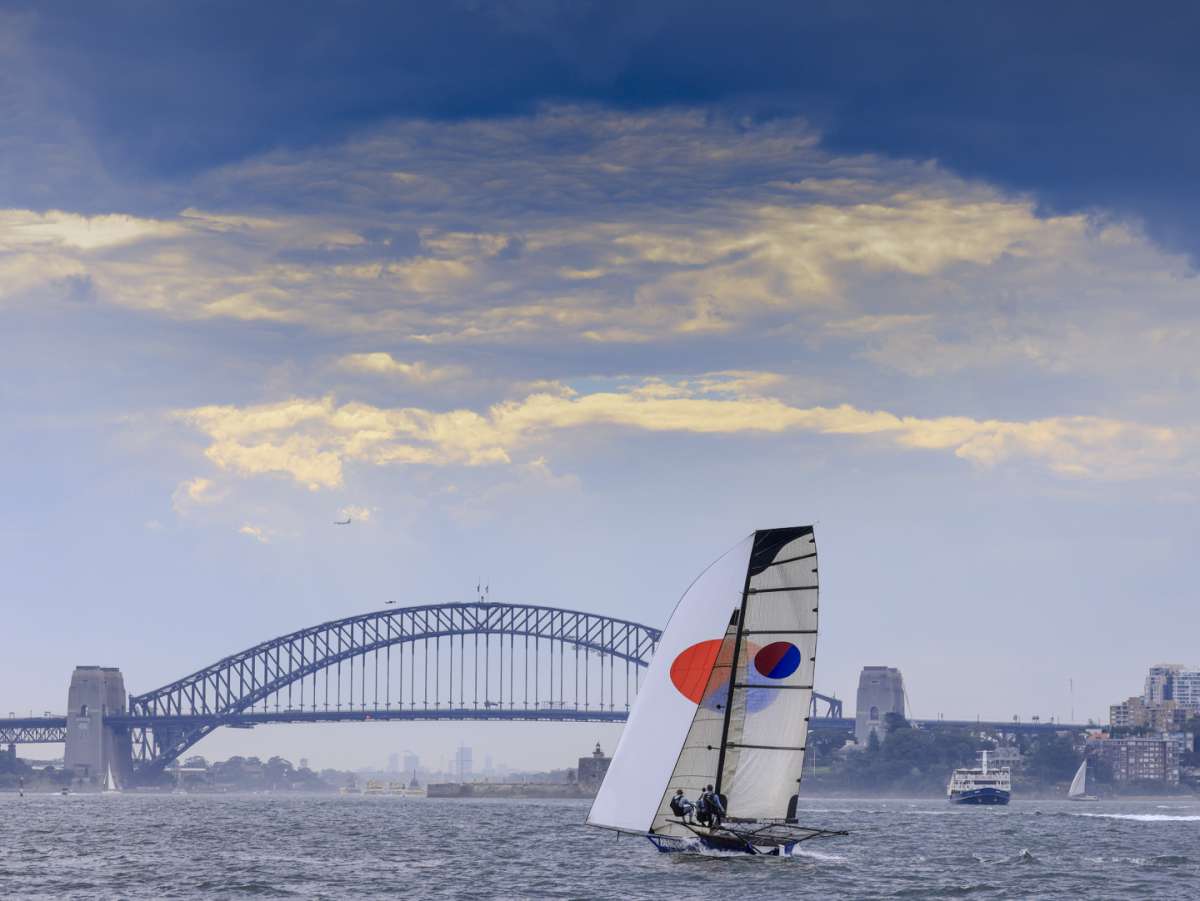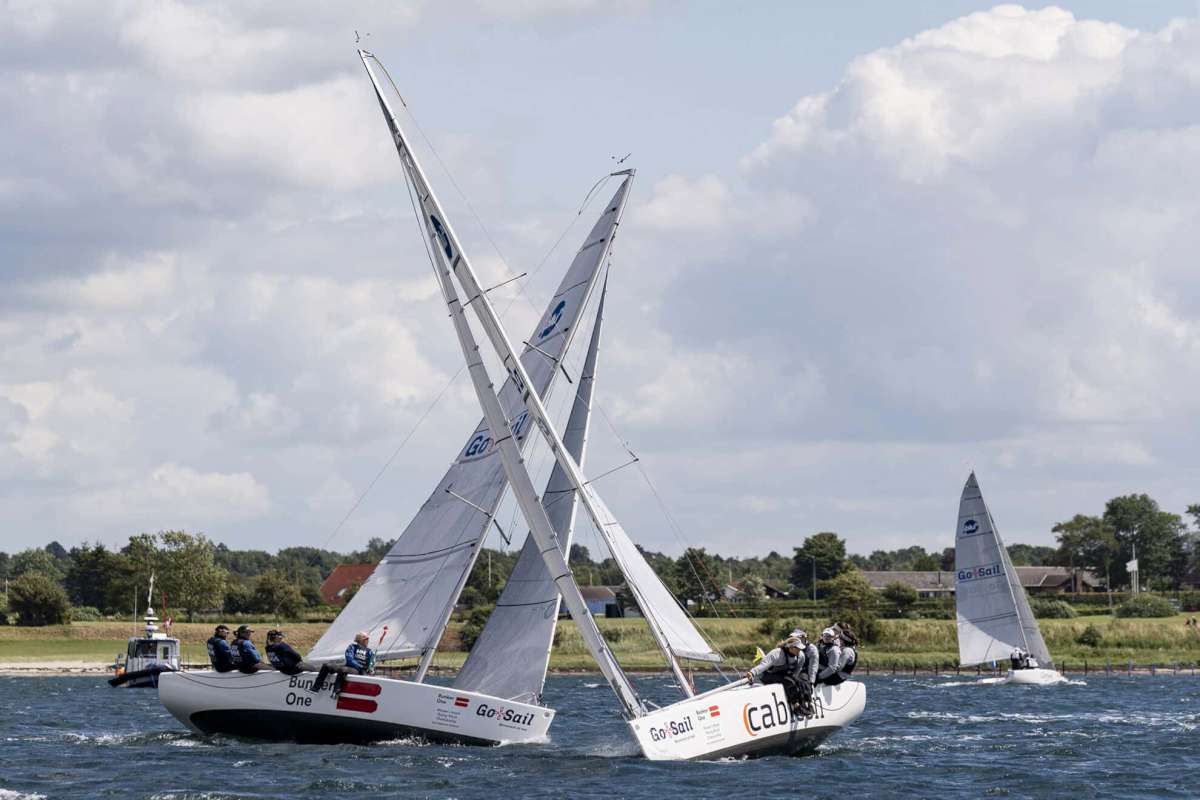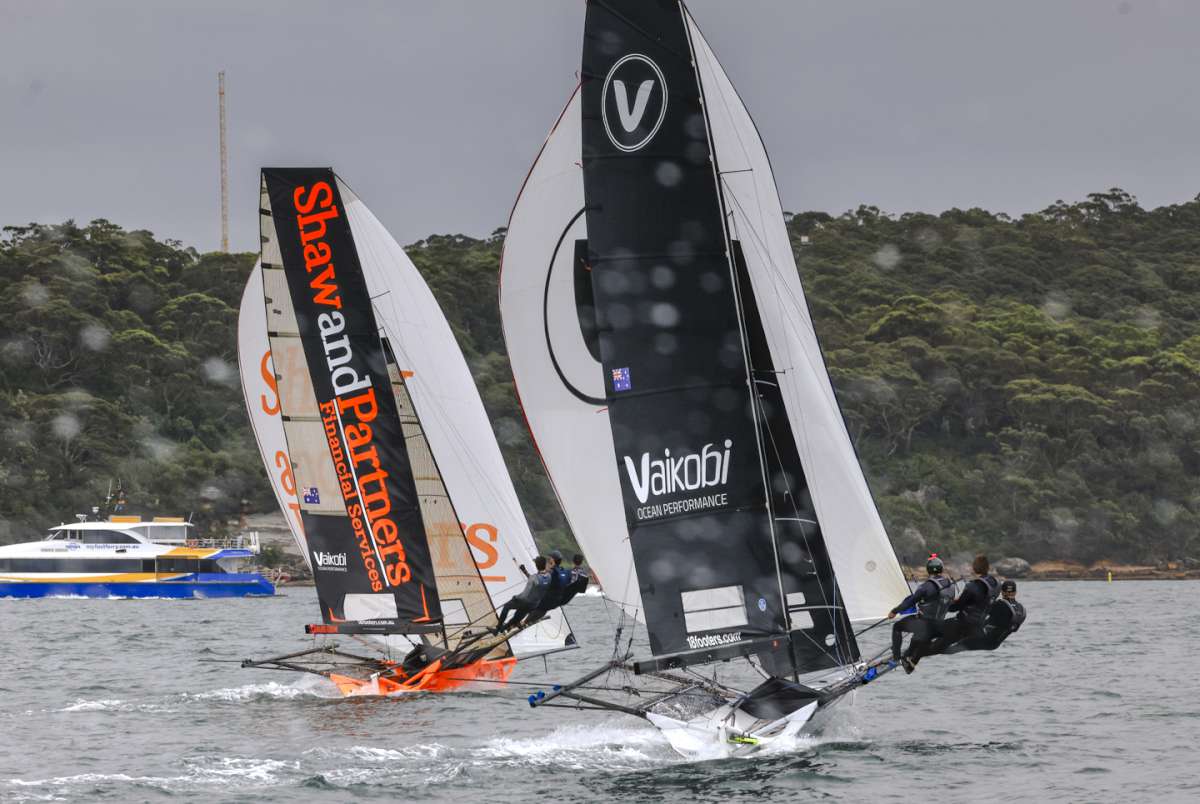“What I had seen so far only in postcards is real, appearing in front of my eyes. This really is a paradise!”
These were my first thoughts as the Air Vanuatu plane lowered towards the crystal clear waters of Port Vila Harbour after flying over some amazing white reefs embraced by deep blue water. That was just the beginning of my discovery and journey through a set of islands that would blow anyone’s mind due to their diversity and the friendly attitude of the locals, who never miss an occasion to smile and wave at you while strolling down the street.
Sheltered anchorages plus safe deep harbours plus tropical clear waters equals a perfect destination for cruisers. Do not forget to add the delicate blend of French and Melanesian culture, which means that while wandering around the local markets you can buy a freshly baked baguette as well as eat boiled taro and fresh produce cooked on the spot.
The first day I arrived to the Port Vila harbour I walked along the foreshore staring at the crystalline water with eyes wide open in disbelief: none of the big, trafficked harbours I had seen so far in other countries had such a great visibility. This was despite the fact that Cyclone Pam hit Vanuatu in March 2015 causing ships to sink, roofs to collapse and people to die.
If you did not know and you didn’t notice the few boats left lying aground on their sides on the small island-resort opposite the yacht club, you would not imagine that such a tragedy happened here only a few months before.
Just on my first day in Port Vila, the last big barge that had sunk there was being salvaged. At the same time a cruise ship was leaving the bay, its shape a mere profile in the pink tropical sunset. Past, present and future live together in the same stunning bay, while tropical fish swam slowly, peacefully, unaware of it all.
The local government, aided by many foreign donations and volunteers, has managed to rebuild some infrastructure since the cyclone hit and a big development plan for this famous bay has been approved. Luckily, the tourist industry seems to have done its best so far to keep the place authentic as well as traveller-friendly.
While in Vanuatu, I walked a lot in order to soak in all that beauty on display: the aquamarine water, the lush vegetation and the idyllic scenes of women picking red hibiscus flowers off the trees, followed and helped by gorgeous chocolate-skinned kids.
Everyone in the street greets you: passers-by, drivers, vendors. Nobody really pushes you to do or buy anything, you can just stroll and relax without any pressure, smiling back. A guy walking by the beachfront showed me the little turtle he was carving out of soft limestone. When he heard I was about to crew a catamaran back to Australia, he showed me a Polaroid picture guarded in his wallet like a treasure, depicting himself and a group of young Australian travellers (guitars, dreadlocks, backpacks and happy smiles included) who sailed to his home village in the island of Tanna.
Making friends and meeting people is very easy, this makes the visit extremely pleasant as the locals love nothing more than social occasions. That is why celebrations and festivals are so popular and usually last for many hours.
I happened to be part of a public conference about the risks and consequences of climate change. So many people were sitting on the big grassy area opposite the cultural museum: children playing, adults listening while enjoying the gastronomical produce of the food stalls set up for the occasion and waiting for the final concert.
I understood indeed since my arrival at the Port Vila airport that music plays a fundamental role within the Ni-Van culture: a local string band puts up a show each time that a plane lands, welcoming the visitors with vibrant notes and cheerful faces.
The man behind the passport check desk hardly bothered to listen to my explanation of why I was flying in by plane and leaving by sailing boat. He had a rapid look at the skipper’s letter confirming my travel plans, he stamped it without any hesitation and he wished me a good permanence in the country.
After that, I moved on to the next cosy section of the airport just in time to see my backpack already touring around the only carousel. The easiest and quickest international arrival and customs clearance ever!
The overseas-bound departure by boat went instead a bit less smoothly. First of all, the port taxes had noticeably increased since the previous year; the skipper of Shining Light, the boat I was crewing, was unaware and quite surprised after his many yearly crossings from Australia to here and back. Rules and prices can indeed change suddenly, so it is wise to always check an official website for the latest updates.
At this stage, quarantine clearance is VT$3000 per yacht, immigration clearance is VT$4800 per yacht for the first 30 days. Port dues are VT$7875 per vessel for the first 30 days; 1000VT is around $12. You can extend your stay by applying for a permit four weeks in advance and paying extra money; this can be also done via email to customsborder@vanuatu.gov.vu.
The unexpected fees increase, plus the fact that the marina ran out of diesel just as we were queueing up at the fuel dock, reminded us all that travelling by yacht seems to be constantly unpredictable. We had no major dramas though; nothing that could not be solved with a few runs by wheelbarrow to the closest petrol station to the amusement of the local men who pointed at me and offered help while I pushed jerrycans of diesel up and down a slight hill.
The disorganisation of the country is not too upsetting indeed, as long as you learn to relax and stop paying so much attention to your watch. It reminds me of many Aboriginal communities in Arnhem Land, or other villages in Asia and other warm climates: “there’s time for everything” seems to be the motto and, between one unforeseen circumstance and the other, the days go by, placid and mellow. So beautiful indeed that you cannot help but finally surrender to the local ways.
It is probably this same attitude that allows the Ni-Van people and society to go on, steady and hopeful, not too stressed even in periods like this, with El Niño causing a strong drought that has followed the previous year’s Cyclone Pam.
Most of the water tanks destroyed by the strong winds got rebuilt, but they have so far been quite useless since the country has not seen rain in months. The land is dry and the produce is scarce and therefore expensive. People accept that without complaining too much, they understand there is nothing to do when big natural events like this strike. So, despite struggling, the Ni-Van keep rebuilding, replanting, collaborating. They know it will rain again, sooner or later. The wheel will turn.
The people of Vanuatu have adopted a philosophy of acceptance that has helped them go through previous harsh times and big changes. The owner of a small local art gallery in Port Vila, Café les Arts, showed me a tall complex timber carving while explaining exactly this concept: “in our culture we believe we live in three times: yesterday, today and tomorrow. They are all interconnected: we live now, which is a consequence of yesterday and will have an impact on tomorrow. Everything is linked.
“From the bottom, this carving represents the Ni-Van history and culture: our traditional activities, the tribes… and then there is a hole in the timber up here, see? Just after the carvings of battles, armies and missionaries… we went through hard times and we got somehow broken but in the end we also got good things: education, knowledge… this hole means we got hurt but then eventually we could look forward and even bad episodes helped us see into the future. We accept history,
even colonialism and missionaries”.
Wise words, I thought. I kept reflecting while walking out of the shop and down the hill towards the wharf. With my passionate attitude, I would probably struggle to see it that way, had I been here in that period. Had I been enforced to change my lifestyle and points of view. But that man’s words made sense: only by accepting and moving on, we can create better things for the future.
Many of my days in Vanuatu, when not busy on board, were spent on the road, sitting at the back of trucks and minivans while passing by colourful kava bars, small fruit stalls, lush vegetation, tranquil lagoons, fallen trees and many ever-smiling children. I met locals and missionaries, foreign businessmen and tourists and everyone seemed to mix harmoniously in the chilled vibes of the island. Everyone enjoying their favourite activities: preaching, relaxing, selling, leading helicopter rides or eating out, whether at a Chinese restaurant or at an international beachfront café.
I adapted with ease to the sweet, slow rhythm of the first days spent in Vanuatu, and between cleaning the hull (a true pleasure in these crystalline waters) and prepping Shining Light for its ocean crossing, I indulged in a variety of local food and sightseeing. I tried sweet potato chips, cooked peanuts and coconut cakes. I visited resorts and villages, exotic
spice gardens and cultural centres. I even ended up going to a graduation awards ceremony in the village of Onesua, in the
north east of the island: hours of chanting, elegant flower dresses and happy clapping.
The last night before our departure from Efate, the All Blacks won against Australia and it was hilarious to see how sport is another bonding event that can push most people out of their houses for celebrations that last until the break of dawn. Any happy occasion is seen as a good opportunity to party together!
A look at the islands
Efate is the main island of Vanuatu. One main road circles around the coast, while the interior is covered in thick verdant rainforest cut only by a few walking tracks to remote weather beacons.
Although buzzing with educational, economical and touristic activities, Efate keeps its quiet attitude and surprises the visitors with its genuine beauty. Its capital Port Vila is a pretty safe, clean and uncluttered town; the unpolluted waterfront area offers stunning views of the magnificent natural harbour.
The colourful central markets offer everything from seasonal fruit and vegetables, food to flowers, wooden carvings and bags woven from natural fibres. I appreciated the national museum, with its interesting display of traditional artefacts and good explanations about the history and culture of the country, with a special focus on inter-island voyaging and ceremonial items.
The Yachting World Marina offers numerous swing moorings, a stern-to or bow-to if you prefer, tie-up seawall with limited berths. A fuel and freshwater wharf, laundry, showers and toilets, Wi-Fi, a bar and restaurant and even apartments if you want to indulge in some extra comfort on land.
The maximum height of the mast and any antennas cannot exceed 23 metres in order to pass under the electricity line that runs from the mainland to the little island/resort of Iririki. If you can’t access the wharf, the marina will arrange for a fuel truck to meet you at the commercial wharf on the southern end of the bay.
Check the marina website for updated info and prices: www.yachtingworld-vanuatu.com.
There is also a boatyard on the southwestern corner of the harbour; here you can use a slipway and perform all sorts of repairs by yourself or contracting one of the specialised local workers.
Epi
Epi is a peaceful island with beautiful white sandy coves and inshore reefs.
The interior is covered in rugged rainforest, while coconut plantations abound along the coast, where most inhabitants live. Many wild pigs and birds can be spotted in the bush.
You can visit cultural villages, abseil down waterfalls, hike or simply stroll around the local markets and have a local feed with a side of banana or manioc. Life does not get much better than this!
Like on other remote anchorages, when villagers spot your vessel they will paddle out in order to trade food and handicrafts. This is a great opportunity to make friends and go and meet the local chief!
Tanna
Tanna is home to one of Vanuatu’s most popular tourist attractions, the Mount Yasur volcano.
Considered one of the world’s most accessible active volcanoes, Mt Yasur is just a one hour drive from Tanna’s Airport followed by a short ten minute walk to the crater rim, which is about 360m high. Over the time, ash rain has built up majestic black sand dunes, creating a moon-like landscape.
But that is not the only reason to visit this unspoilt island: the list is long and it includes diving in underwater caves or witnessing one of the numerous authentic cultural ceremonies that still go on nowadays.
The Nekowiar is a spectacular event which includes dances, feasting and gift giving, a pity it takes places only every three or four years!
You can visit one of the Kastom (traditional) Villages or learn about some more recent and peculiar beliefs like the John Frum’s cargo cult, whose believers worship a figure who is supposed to come back from the US with many goods for everyone.
If you would like to stretch your sea legs, you might choose instead to hike the beautiful Whitefrass Plains, home to the island’s famous wild horses. The scenario looks like a movie set and the views from the top are simply breath-taking!
Espiritu Santo
The largest of Vanuatu’s islands at 4,010 square kilometres is a watery playground for sea lovers.
You can plunge into blue holes where crystal clear water surfaces in springs after passing through layers of limestone and coral: you will be stunned by that saturated sapphire colour.
Or you could dive at world renowned spots like the wreck of the SS President Coolidge or Million Dollar Point, where the US forces dumped hundreds of tonnes of civilian construction equipment at the end of World War II. You will swim around all sorts of war relics, from bulldozers to trucks. Entry is charged but it is worth it!
If you are interested in caves, Millennium Cave is a must: walk through this 50m high space full of bats, stalactites, stalagmites and amazing rock formations moulded by water.
Torres and Banks
These are Vanuatu’s northernmost islands, remote and laid-back.
Active volcanoes remain on Gaua and Vanua Lava, offering numerous opportunities for good trekking. If you are a confident climber, head for the massive rock formations at Ra before rewarding yourself with some pure relaxation on some pristine sandy beach.
The northern tip of Ravenga Island also offers a surf break onto the reef at high tide. It is not easy to access, but it is a perfect and uncrowded place for a keen surfer, as long as you can get there by boat.
For something different, you can try traditional fishing on an outrigger canoe: your Pacific experience does not get much
more unique than this.
Malekula
Malekula is known as the island of ‘kastom’ and adventure.
Many visitors are intrigued by its history of cannibalism. It is the second largest island and the most diverse, culturally and linguistically, with over thirty distinct languages spoken.
Port Stanley, on the east coast, has plenty of anchorages offering good protection from the south easterly winds. The interior of Malekula is mountainous and forest-covered with good jungle walking and bird watching; follow a local guide to find the old cannibal sites and spirit caves hidden in the bush in the north.
The villagers are exceptionally friendly and enjoy sharing their proud cultural heritage with visitors.
Sail to any of the small islands off the coast of Malakula for good anchorages, excellent snorkelling and undisturbed relaxation. This area is a perfect escape back into nature for the environmentally conscious traveller: snorkel on top of giant clam shell gardens or spot dugongs and turtles in these marine sanctuaries.
Ambrym
Nicknamed ‘the black island’ due to its volcanic ash and because of its black magic-steeped mystery.
Ambrym prides itself on some unique characteristics, such as sand-drawing, black-fern masks and local dances. The twin active volcanoes of Mt Benbow (1160m) and Mt Marum (1270m) are constantly making the presence felt. They are located in the middle of the island and form a huge caldera some 10 to 12 kilometres diameter.
Visiting the area involves some hard trekking with a trained local volcano guide and one to three nights camping on the caldera. This must be booked in advance to ensure all kastom fees are paid to the caretakers of the volcanoes.
There are many unique traditional dances in Ambrym but perhaps the most striking one is the Rom (masked) dance, where masked ‘spirits’ stomp out ancient rhythms to the beat of the tam tam, a traditional split drum. Cultural festivals around the yam harvest in the middle of the year are some of the best times to see Rom dancing.
Pentecost
Pentecost Island has become famous throughout the world for the land diving ritual Nagol, or N’gol. It occurs every Saturday between April and June.
The ritual, which influenced the invention of bungee jumping by New Zealander AJ Hackett, sees local men and boys as young as seven jump from a 20 to 30 metre high manmade tower, with only a vine attached to their legs. The tower itself takes locals five weeks to build using materials from the forest. The awe-inspiring ceremony celebrates the yam harvest and represents a fertility rite for men.
A great lesson
With over 100 distinct languages and innumerable dialects, Vanuatu is one of the most culturally diverse countries on earth. Although some are now gradually getting endangered, due to the use of the lingua franca Bislama, many remote places are still very authentic and fascinating.
With no traditional written language, storytelling, songs and dances are of paramount importance. Similar to Australian Aboriginal stories of the dreamtime and Maori legends of the creation.
The Ni-Van culture is also abundant in mythic legends. Natural formations, the presence and causes of volcanic eruptions and other natural disasters, are all linked to legends of significant cultural importance.
The patience of these islanders and their acceptance of natural and historical phenomena made me reflect upon our Western societies, the fast rhythms and constant competition.
It was an honour to witness and embrace through Aboriginal people, sailors and islanders, a simpler lifestyle closer to nature, in the past few years. Vanuatu can offer a unique occasion to every yachtie by reminding us what cruising is all about: slowly crossing currents and oceans, playing with the wind, learning from nature and sharing our experiences with like-minded people.
So sail away to the Pacific and fall in love with its charm. I promise you will not regret it.
Chiara Bussini




